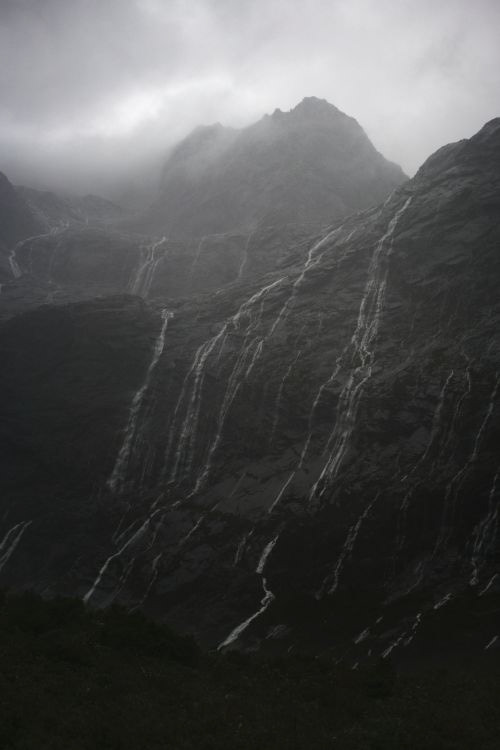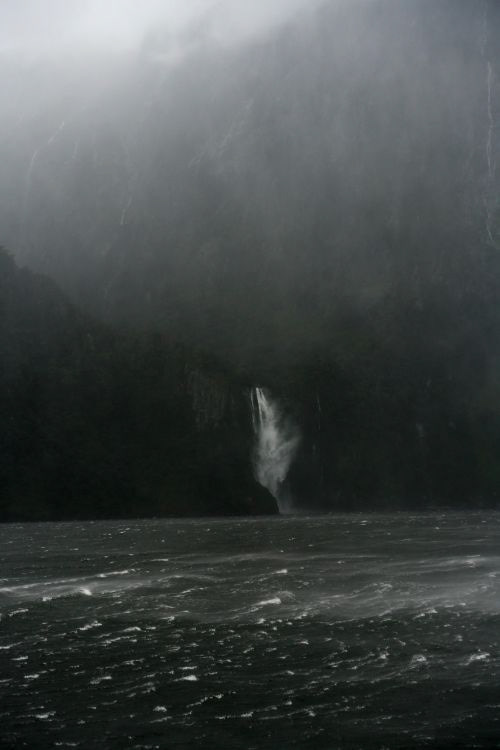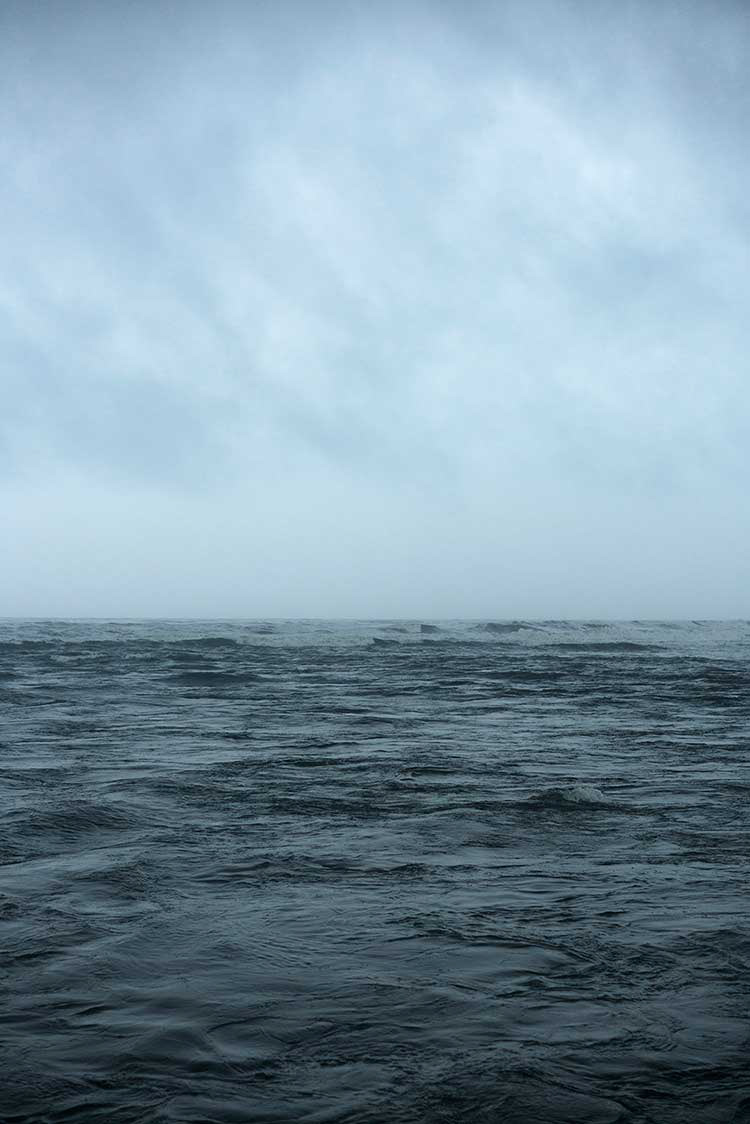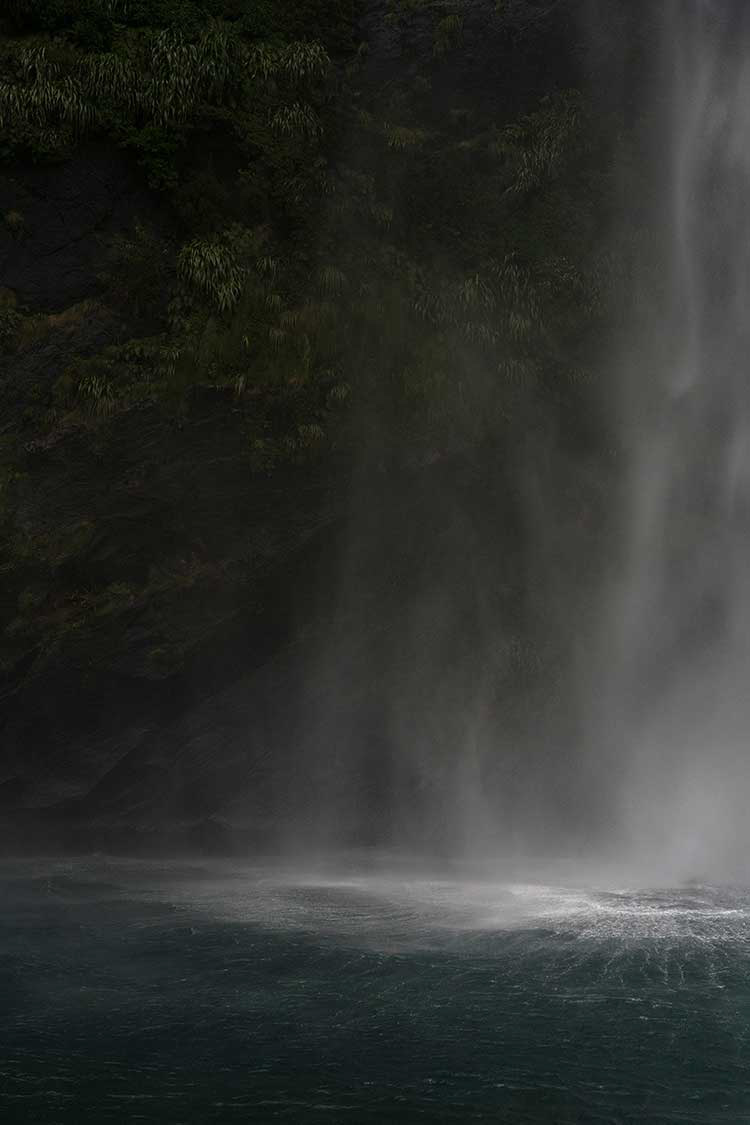“Jem Southam was born in Bristol in 1950. He studied at the London College of Printing for a Higher Diploma in Creative Photography from 1969 to 1972. Beginning in the 1970s, Southam began documenting the landscape of the South West of England, patiently and thoughtfully recording changes at a single location over periods of months or years. His richly detailed works document subtle changes and transitions of the landscape, allowing Southam to explore cycles of life and death through spring and winter, and also to reveal the subtlest of human interventions in the natural landscape. His work is characterised by its balance of poetry and lyricism within a documentary practice.
Working exclusively in series, he has produced several bodies of work, including The Raft of Carrots, The Shape of Time: Rockfalls, Rivermouths, Ponds, The River – Winter, The Painter’s Pool, Upton Pyne and The Red River. Southam’s early and seminal body of work The Red River (1982-1987) followed a small stream in the West of Cornwall from source to sea, documenting the legacy of tin mining on the river’s valley and the people who live there.
His 2012 series The River – Winter investigated how the concept of winter is embedded in society’s shared imagination. The series traced the passage of a single winter, following the path of the river Exe and its tributaries in Devon. The Moth (2018), revisits sites from The Red River made almost two decades earlier. Inspired by the old English poems ‘The Wanderer’ and ‘The Seafarer’, the series moves freely between interior and exterior, from sweeping vistas to quiet, overlooked details of rural life.”
After a lifetime of making work solely in the South-West of Britain, Southam’s 2018 series The Long White Cloud is the result of a six-week journey to document the landscapes of both the North and South Islands of New Zealand. The photographs in this series show his continued fascination with the subtleties of colour, with reflection and transience, and with the effects of the shifting seasons and weather on the landscape. Influenced by tales of New Zealand’s discovery by seafaring Polynesians, in The Long White Cloud, Southam focuses on the bodies of water Southam found on the island. Exploring notions of the sublime in the varied natural landscapes of New Zealand, these photographs accentuate the connections between the drama of nature to the inherent mythologies of the land.
Southam has held solo exhibitions at The Photographers Gallery, London, Tate St Ives, and The Victoria & Albert Museum, London. His work is held in many important collections, including those of the Rijksmuseum, Museum Folkwang, the Yale Centre for British Art and the The Victoria & Albert Museum. He is currently Professor of Photography at the University of Plymouth.”
Huxley Parlour
https://huxleyparlour.com/artists/jem-southam/
The Long White Cloud




Huxley-Parlour are pleased to announce an exhibition of new works by Jem Southam, perhaps the most important British landscape photographer working today. In 2018, after a lifetime of making work in the South West of Britain, Southam made his first overseas trip to produce his latest body of work in New Zealand. The works in the exhibition are the result of a six-week journey around the North and South Islands, and have never been exhibited before.
These new photographs build and expand on themes that Southam has explored throughout his forty-year career. They show his continued fascination with the subtleties of colour, with reflection and transience, and with the effects of the shifting seasons and weather on the landscape. Southam’s work is characterised by its balance of poetry and lyricism within a documentary practice. His photographs present a sociological and physiological investigation into the landscape, touching on man’s intervention in nature, and the cycle of decay and renewal.
Influenced by tales of New Zealand’s discovery by seafaring Polynesians, in The Long White Cloud Southam focuses on bodies of water found on the island.The series took him to Milford Sound and Mount Cook where he documented the watery landscapes enveloped by a huge variety of atmospheres and conditions. The resulting large-scale photographs document the country’s lakes, rivers and dramatic waterfalls, with Southam gaining inspiration from the constant and seamless cycle of matter, from air to water to cloud and vapour, and back again. Exploring notions of the sublime in the varied natural landscapes of New Zealand, these photographs accentuate the connections between the drama of nature to the inherent mythologies of the land.
‘Aeoteroa’, or ‘The Land of the Long White Cloud’, was the name given to the North Island of New Zealand when the Maori navigators first saw signs of the new land in the formations of drawn out strands of cloud spreading across the horizon. It is the dynamic at the heart of this apparition that these pictures aim to explore. The remarkably rich and varied physical profusion of landforms of New Zealand apprehended and made manifest through the momentary shifts of light and the weather. – Jem Southam
https://huxleyparlour.com/exhibitions/jem-southam-the-long-white-cloud/
Jem Southam's work has that same breath taking majesticness that is felt in Ansel Adams work. “The Long White Cloud '' explores the relationship between the land and water while documenting the moments that Southam experienced while being immersed in the moment of picture making. In the video above, he talks about how, when making a body of work he is always questioning the relationship that humanity has with the land that he is in. Spending most of his photographic career in the South West of England he took a new enquiry over to New Zealand where he found himself photographing the streams, rivers, ocean. This project documents the landscape that he spent much of his time in, some photographs shot from the land and others shot by boat. Capturing the small details of the moments that he experienced. Small dashes of water and wind blowing spray from the waterfalls which all influenced his experience when he was standing in the landscape. The main aim for these photographs is to show the viewer the moments of complete immerness within the landscape to convey the relationship between man and land.
This is one of the photographs that stand out to me the most within this body of work. The ominous clouds bring forward the power of the landscape which stands over the viewer when they are standing at the bottom of this image. The high horizon composition additionally enforces this power which emphasises the size of the land that was towering over Southam as he was releasing the shutter button. The streaks of water flowing down the dark rock lead the viewer up and down the photograph, this linear navigation gives the viewer the feeling as if they are looking at an image that is above them. Southam talks about taking photographs that capture the immersive experience that he has when he takes the photograph. The notion of perception and power is given to me when I am viewing this high contrast photograph which captures every detail with clarity in the frame. The use of negative space draws the viewer into the white streaks of water that flow down the dark rock face which produces the feeling that Southam was standing in a perhaps wet environment. The feeling of being immersed in Southam's moment when he shot this photograph is most definitely conveyed. I feel the environment that he would have been standing in when taking this photograph and I think that the more time you spend looking at his photographs, the more you feel connected to the land that he has captured.
Southam creates a moment in his photography that I too try to make my viewer feel. In my “Untitled Thought- Seeking Silence” my goal was to bring the viewer into the moments of silence that I was having and capturing in order to bring them closure to the land that I was photographing. Capturing the beauty and power of the land is something that I convey in the work that I make. I connect with Southams philosophy on a great level as I want to bring the viewer into the moment that I was in the second I released the shutter button. This connection between man and land is something that I am fascinated with. The connection that I have with it is something innate and unexplained, this is perhaps why I have sometimes struggled to explain why I am making the work that I am. Going forward with my body of work I am going to make it a primary goal to bring the viewer into the moments that I am experiencing while creating a body of work that inquires my personal relationship with the land.